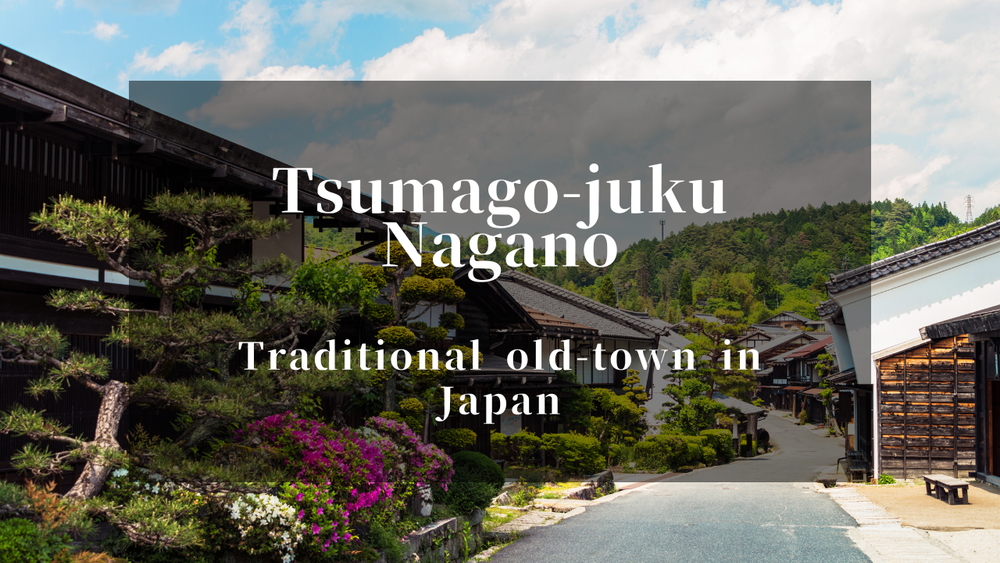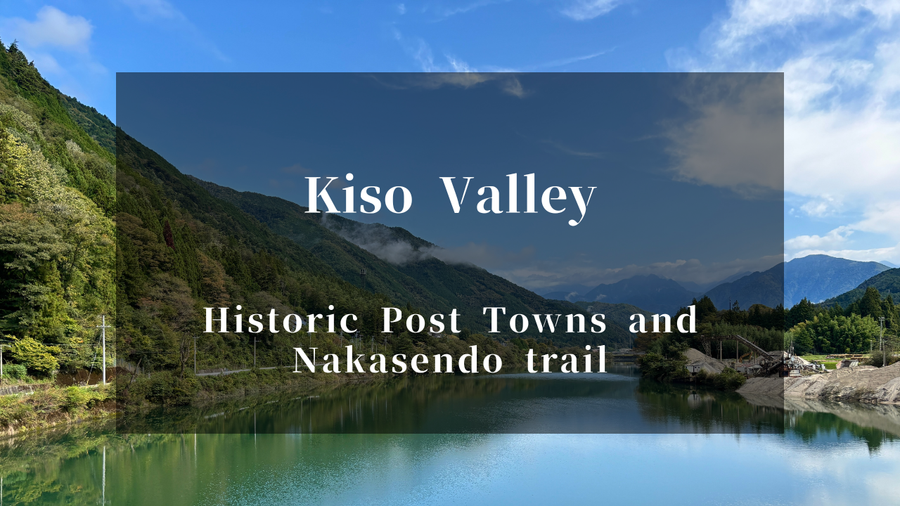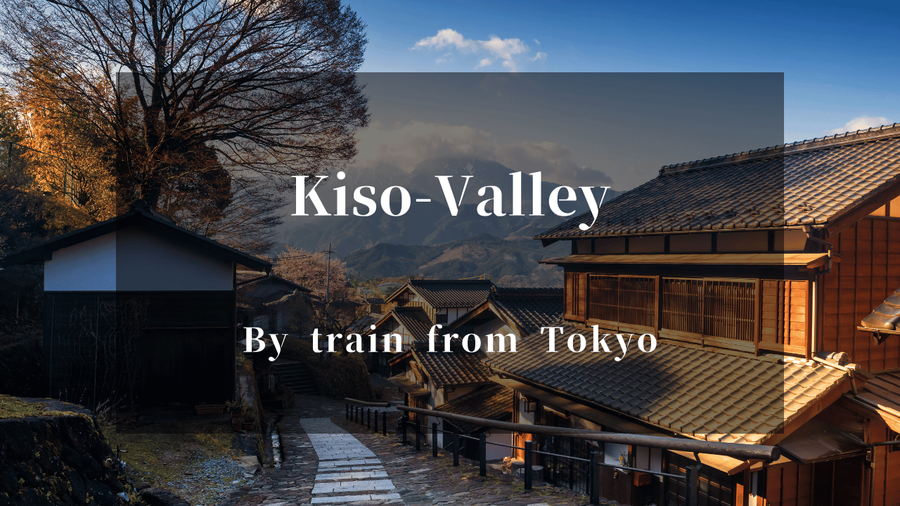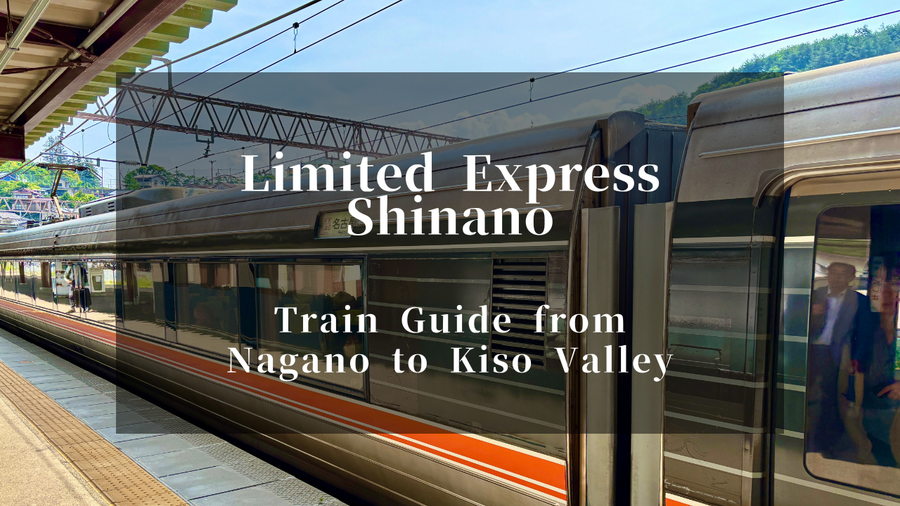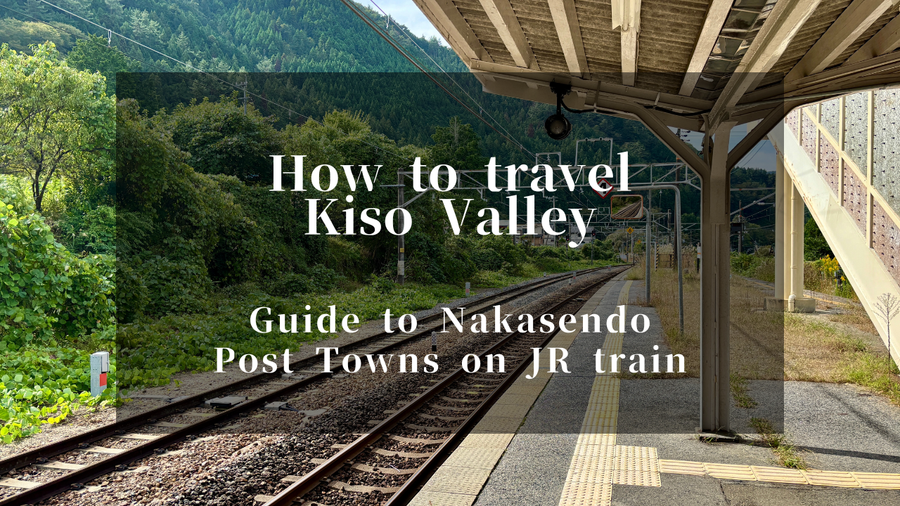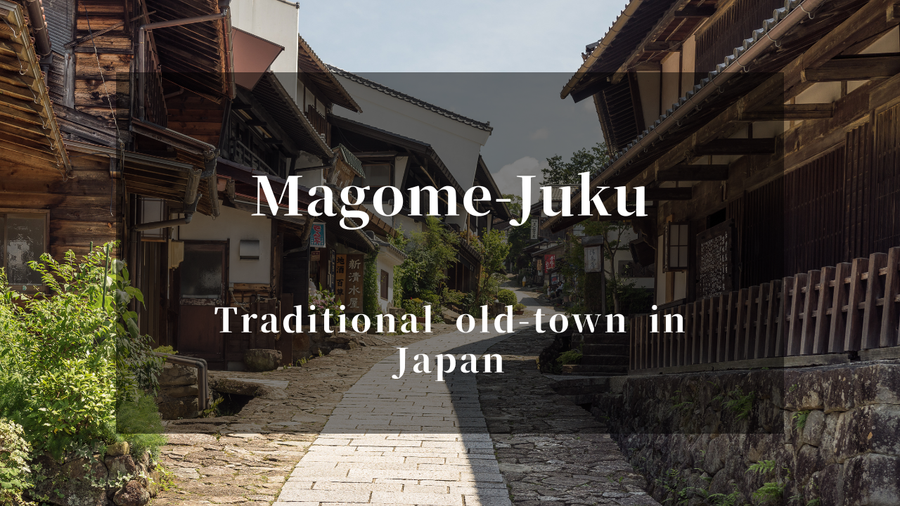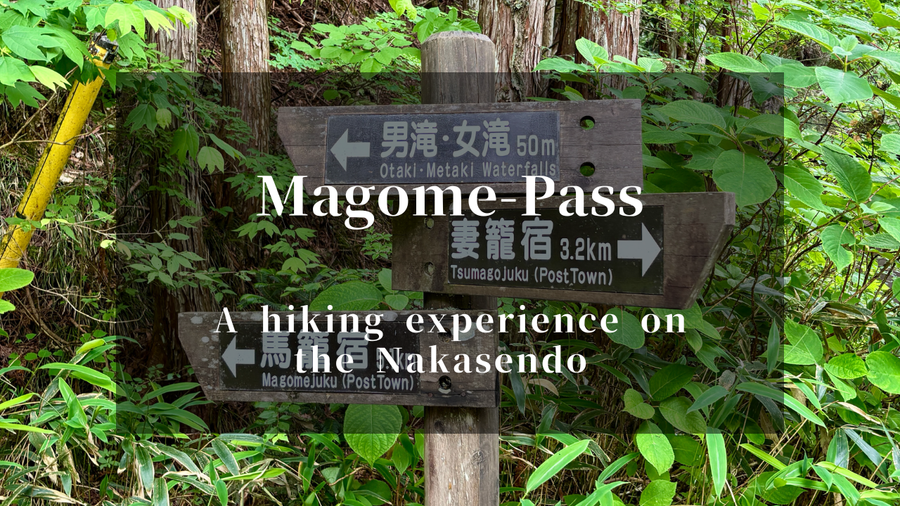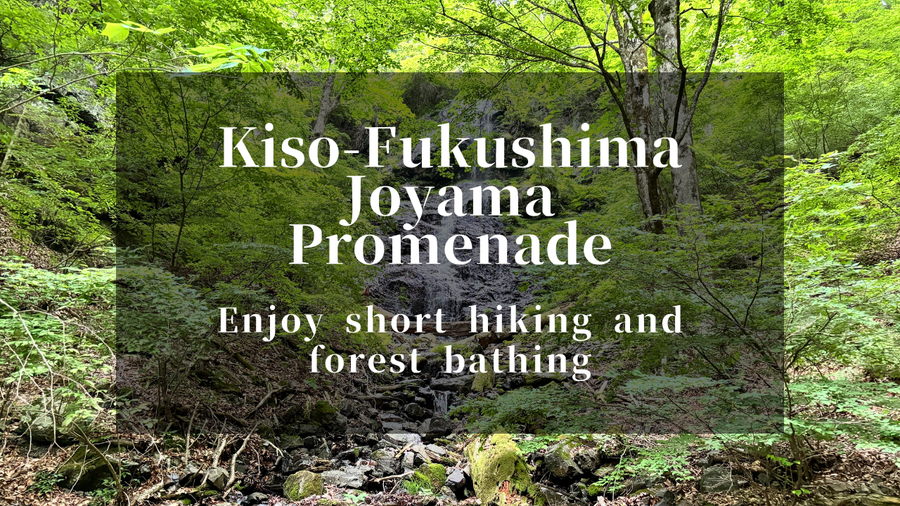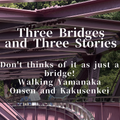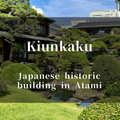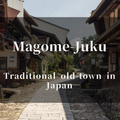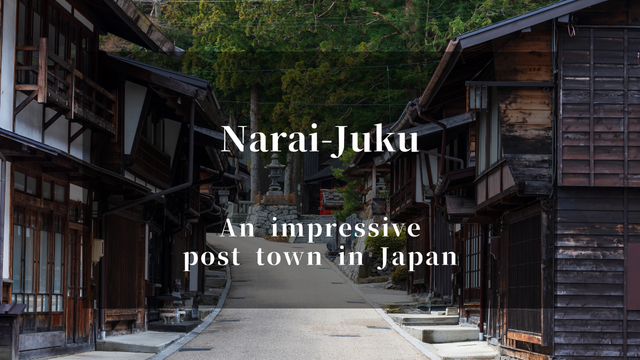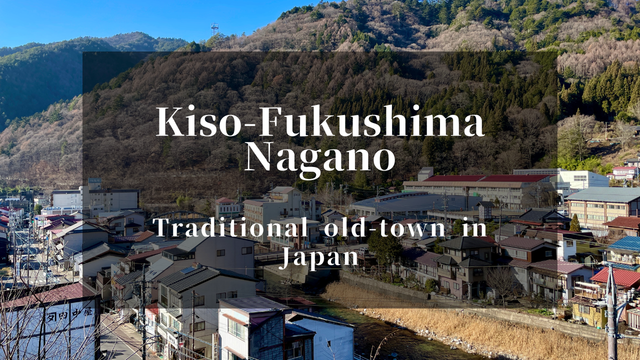Imagine this – you’re walking along a quiet street used by samurai and merchants over 400 years ago. Sounds like a dream? At Tsumago-juku (妻籠宿), this dream can come true.
Tsumago-juku is a historic post town on the old Nakasendo Road(中山道), which once connected Edo (now Tokyo)and Kyoto during the Edo period. A post town (宿場町) was a place where travellers could rest, stay the night, and feed their horses.
Tsumago-juku is located in Nagano Prefecture(長野県), in the heart of Japan. It takes about 2 hours 40 minutes from Tokyo, or 2 hours from Osaka by train. A perfect spot for a day trip or an overnight stay!
If you want to enjoy a traditional Japanese townscape, Tsumago-juku is the place to go!
It takes just under 4 hours to reach Tsumago-juku from Tokyo by JR train and bus.
To avoid crowds, it’s best to visit in the morning or evening on a weekday.
Tsumago-Juku: Step into Traditional Japan
If you want to see a real, old-style Japanese town, Tsumago-juku is a must-see. Wooden buildings line the street, and many have old-style wooden signs hanging at the front. You won’t see any modern buildings or visible electrical wires — they are buried underground to keep the historical look of the town. All buildings have been restored to look like they did in the Edo Period, making it feel like you've travelled back in time.
As you walk along the streets, you may hear the creaking of wooden floors or the soft sound of water from a waterwheel. These sounds remind you of the long history of this town. When you see it in person, you’ll be amazed by how carefully everything has been preserved. Thanks to the local residents, modern signs or buildings are strictly controlled, and every detail is protected.
This makes Tsumago-juku a wonderful place to take photos — from every angle, it looks like a scene from a historical drama.
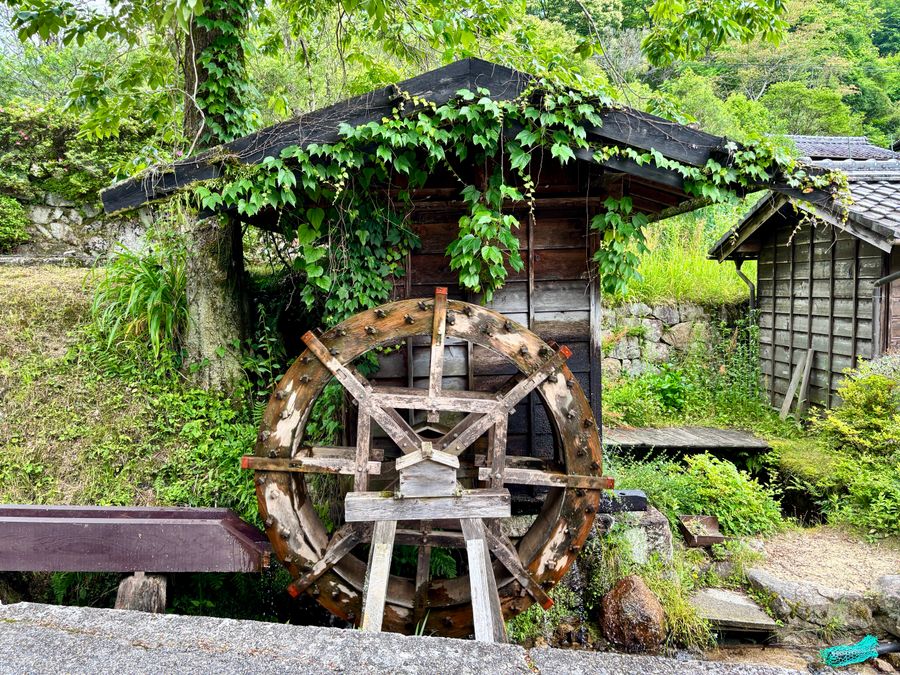
How to Get to Tsumago-juku(妻籠宿)
The easiest way is to take a JR train to Nagiso Station(南木曽駅), and then ride a local bus.
From Major cities to JR Nagiso Station
From Tokyo: Take the Azusa express to Shiojiri, then a local train to Nagiso (about 3 hours)
From Nagoya: Take the Shinano express to Nakatsugawa, then a local train to Nagiso (about 1.5 hours)
From Osaka: Take the Shinkansen to Nagoya, then follow the same route (about 3.5 hours)
We took the JR Azusa Express from Tokyo. For information about how to buy tickets, see our train guide.
Bus from Nagiso Station to Tsumago-juku
At Nagiso Station(南木曽駅), go left after the ticket gate to find the bus stop.
Bus Company: Ontake Kotsu(おんたけ交通)
Destination: Bound for Hoshin(保神) or Magome(馬籠)
To Tsumago-juku: About 10 minutes
Fare: 300 yen (as of July 2025)
You get on the bus through the middle door, and pay the fare in cash when you get off. The fare is 300 yen ($2), and you cannot use credit cards, JR Pass, or IC cards like Suica. Also, buses cannot give change for large bills over 2,000 yen, so make sure to bring 100 yen or 500 yen coins.
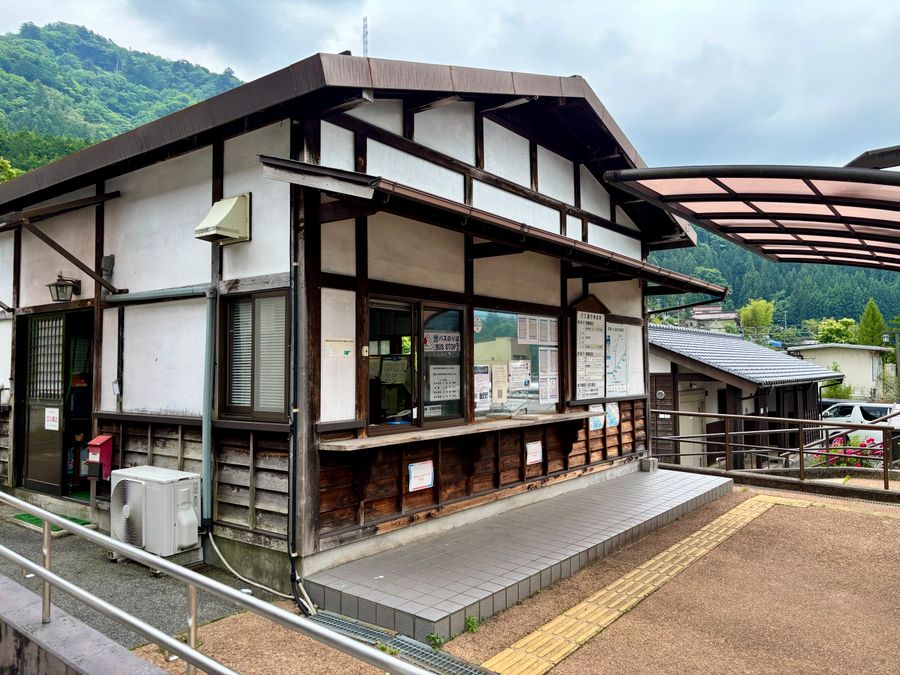
Be Careful About Bus Times
The bus fare is very reasonable, but the number of buses is limited. As of April 2025, the timetable is:
From Nagiso Station to Tsumago-juku:
8:40 / 10:10 / 10:40 / 12:40 / 14:15 / 15:00 / 16:35 / 18:00
Please note that there are not many return buses either, so plan your visit carefully.

Taxi from Nagiso Station
Another good way to reach Tsumago-juku is by taxi. The ride takes about 10 minutes, and costs around 1,000 yen. Usually, taxis are waiting just outside the station. If not, you can call to book one:
Nagiso Kanko Taxi(南木曽観光タクシー)
Phone: 0264-57-3133 (open 7:00–19:00)
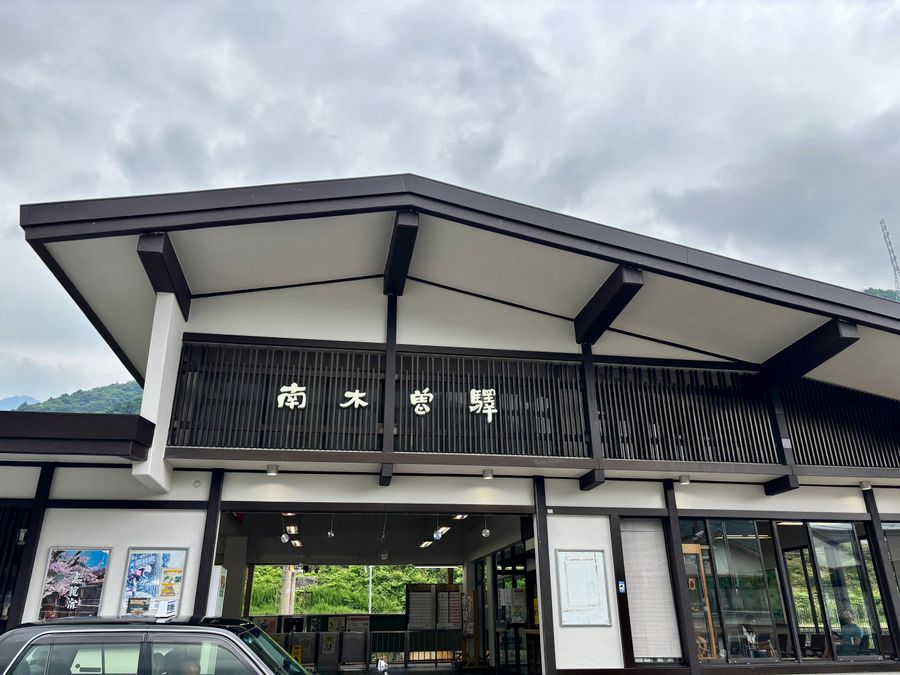
What to See in Tsumago-juku
Tsumago-juku is known for its beautiful Edo-style buildings and peaceful streets. Behind the houses, you can see mountains that add to the atmosphere. There are also waterwheels and other traditional buildings that give you a real feel for old Japan.
Time Needed:
Walking from one end of the town to the other takes about 20 minutes. But if you want to explore the buildings and museums, plan for 1 to 2 hours.
Wakihonjin Okuya(脇本陣奥谷)
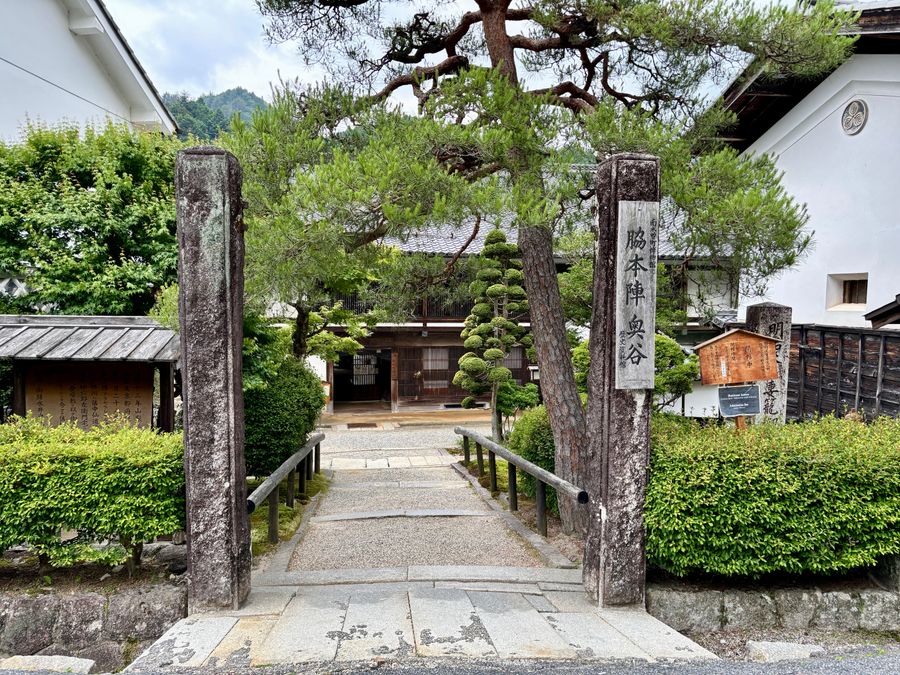
One of the most important sites in the town. This building was used as a secondary lodge for high-ranking people, such as samurai lords. Inside, you’ll find rooms with original furniture and household items. It shows what life was like for important travellers.
Admission: 600 yen (adults), 300 yen (children)
Open: 9:00–17:00 (last entry at 16:45)
Closed: 29 December – 3 January, and 2nd & 4th Thursdays
Location: Google Maps
Honjin(本陣)
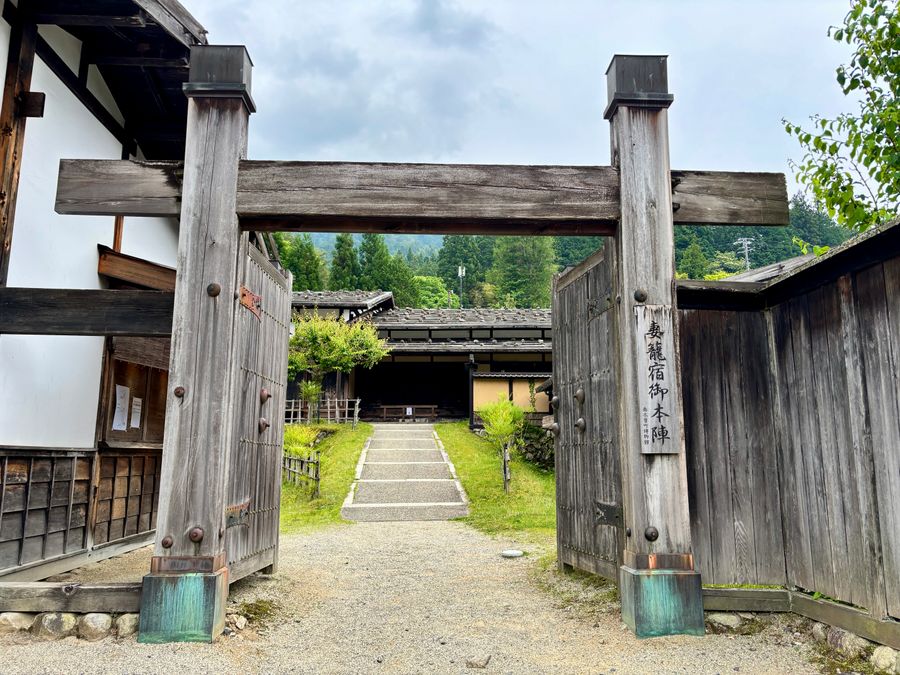
Right next to Wakihonjin, this building was the main inn for nobles and government officials. The rooms are more luxurious, and you can learn how wealthy guests stayed during their travels.
Admission: 300 yen (adults), 150 yen (children)
Open: 9:00–17:00 (last entry at 16:45)
Note: Currently closed on weekdays
Kosatsuba(高札場)

In the Edo Period, people didn’t have TV or the internet. So how did they get news? At Kosatsuba, the government posted laws and announcements on wooden boards. It worked like a community noticeboard.
Koi Rock(鯉岩)
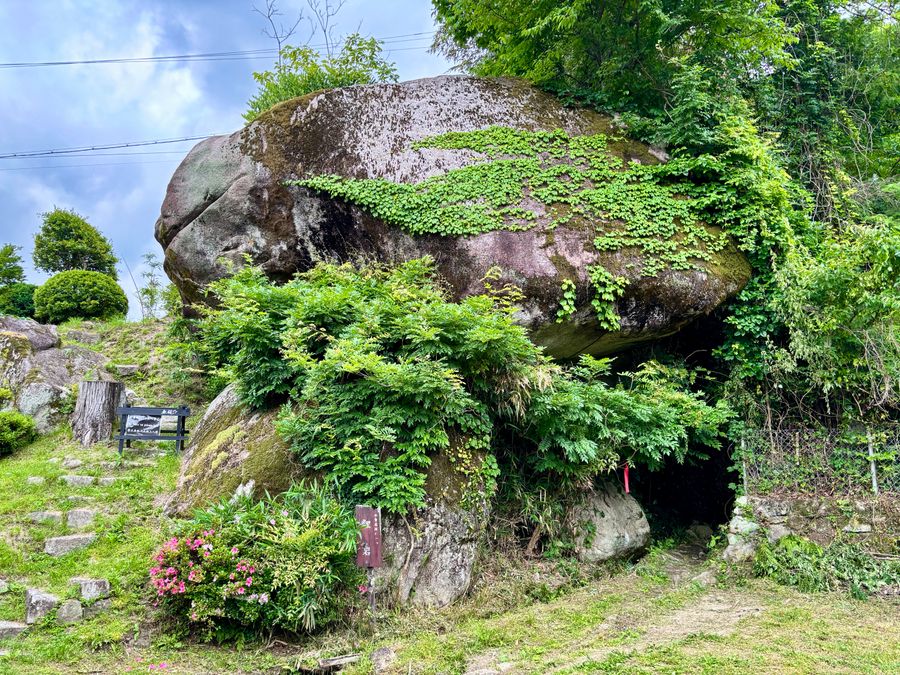
This is a local mystery spot. Koi Rock is said to look like a carp (koi fish). But these days, it’s hard to see the shape. Over 130 years ago, an earthquake caused part of the rock (the head) to fall off. A guidebook from the Edo Period shows that it really looked like a carp back then. Now, it's a fun story to tell and a place to use your imagination!
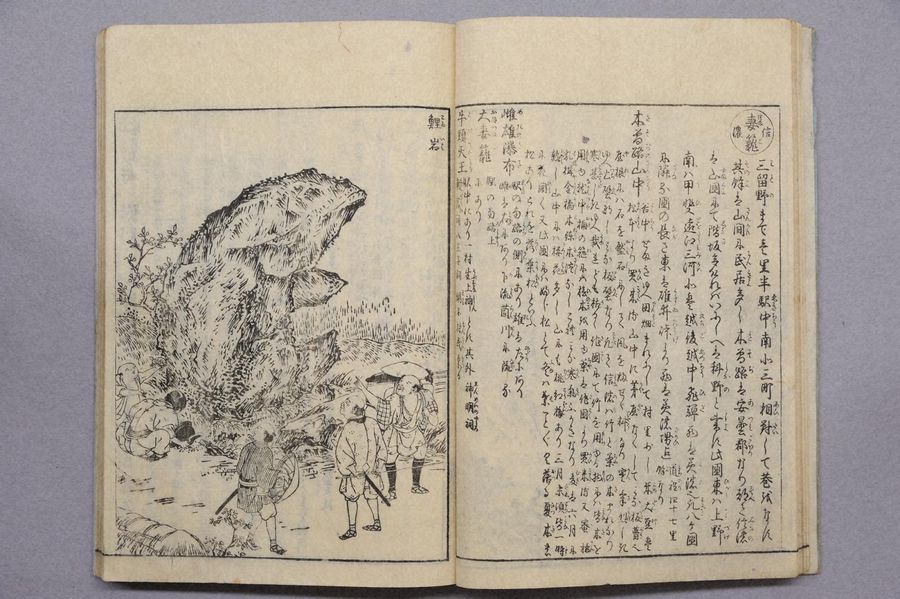
Local Food in Tsumago-juku
If you get hungry while walking around the town, stop and try some local dishes. There are small restaurants and food stalls. We went to Yamagiri Shokudo(やまぎり食堂).
Location: Google Maps
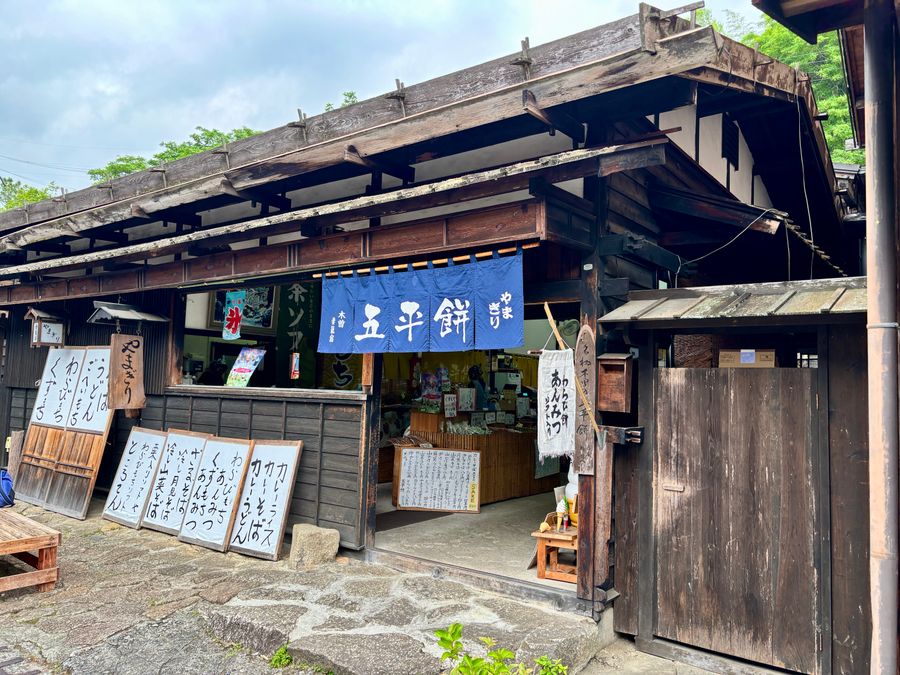
Gohei Mochi(五平餅)
This is a regional dish made with rice shaped on a stick and grilled with a sweet-savoury sauce. Crispy outside, soft inside — a must-try!
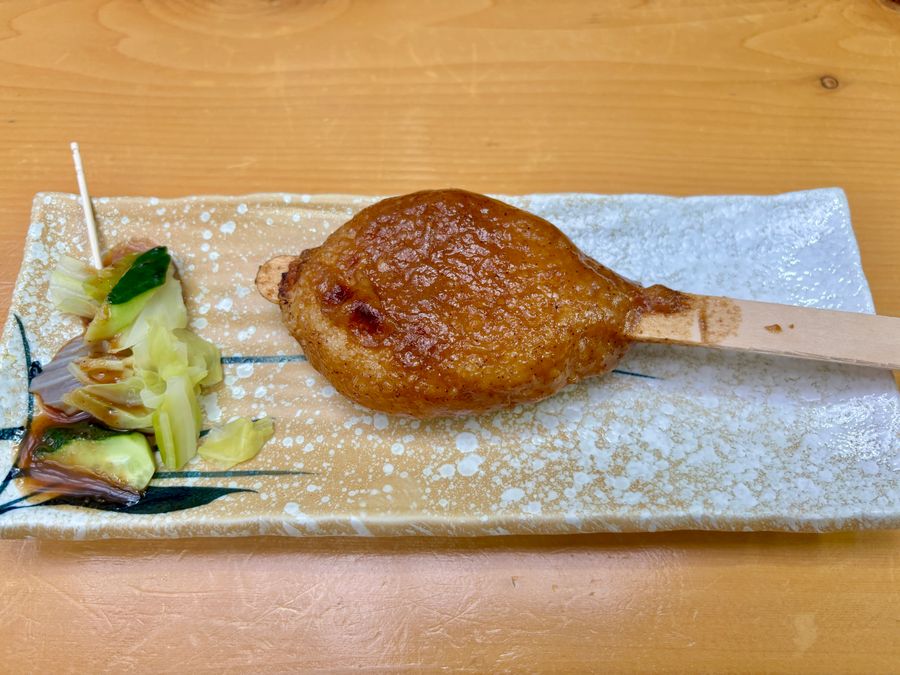
Kuzumochi(くず餅)
This clear, jelly-like dessert is popular in summer. Served with brown sugar syrup and soybean flour, it's refreshing and mildly sweet.

Soba and Udon
After hiking the Nakasendo trail, we had curry soba at Yamagiri Shokudo. It really warmed us up and helped us recover!
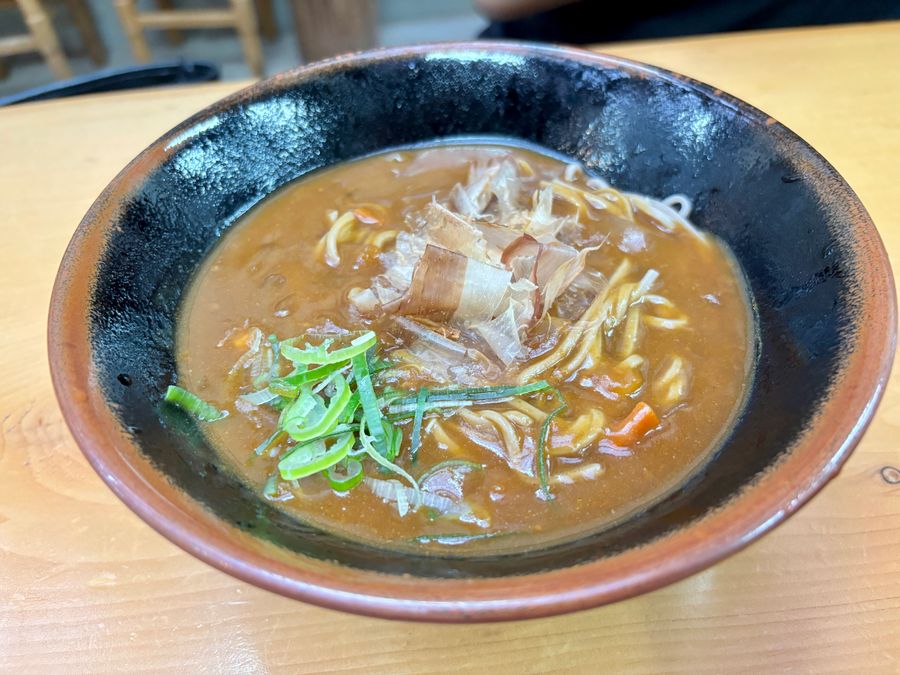
Hike to Magome-juku(馬籠宿)
After exploring Tsumago-juku, consider walking the trail to Magome-juku, another historic post town.
This 8 km hike takes you through forests, waterfalls, rice fields, and old stone roads. You might meet kind locals along the way. The trail is not too difficult and takes about 3 to 4 hours. It’s not just a way to travel — it’s an experience by itself.
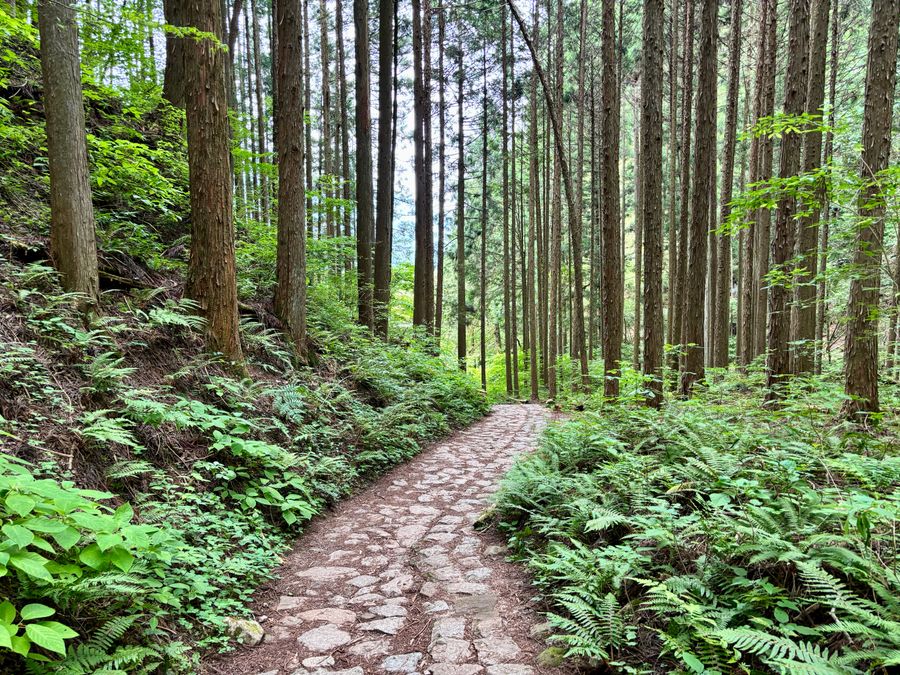
Where to Stay: Kiso-Fukushima(木曽福島)
We recommend staying in Kiso-Fukushima, which makes a great base for visiting Tsumago-juku and Magome-juku.
Why It’s Great:
Easy Access: The Shinano express stops here. About 1 hour from Nagoya.
Many Places to Stay: From old inns to modern hotels, for every budget.
Great Location: Easy access to other post towns like Narai-juku(奈良井宿).
Fun Town: Visit the old checkpoint ruins, enjoy foot baths, and explore historic streets.
Kiso-Fukushima also has good food options, and you can try local sake and mountain food in cosy izakayas. Plus, starting your day early means you can enjoy Tsumago before the crowds arrive.


